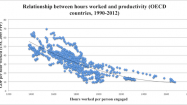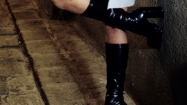FIVE new roundabouts are dismaying residents of Tennant Creek, an Australian town. “Too big, too high, and no consultation,” complains Darrin Whatley, a businessman, who says several motorists have already collided with them. He accuses the council of installing them “for their own sake”. They “look like albino teddy bears’ backsides”, thunders the local newspaper.
For a century Britain’s many roundabouts have flummoxed foreign drivers. These days they are as likely to be found overseas. Australia boasts 8,000 of them; France has 30,000. Nevada built America’s first in 1990; today there are 3,000, and every state has one. Israel and Hong Kong are keen, as is Jordan. Amman, the country’s capital, has so many they are numbered and residents give addresses by reference to the nearest.
Roundabouts are not as cheap as they look. Some cost over $2m to build. But they are less expensive to run than traffic lights, which can cost $100,000 a year to power and maintain. They cut congestion because they do not require drivers to stop completely—that makes them greener, too. Their biggest benefit is safety. American authorities say swapping crossroads for roundabouts cuts deaths by 90% and crashes by a third.
They drive some people round the bend. Signs and public-service announcements have taught Americans how to negotiate their new rotaries. That is not the case in some poor countries. Motorists in Baghdad sometimes circle them in both directions. In parts of Italy drivers expect cars already on the junction to give way to those joining it. Nor are the safety benefits shared with all road users. Researchers at Hasselt University in Belgium say that cyclists are 41% more likely to die at a roundabout than at a crossroads. They have been known to swallow pedestrians. In Britain the body of a man who collapsed while crossing one lay undiscovered for 11 days.
Yet innovation approaches, says John Hourdos, an engineer at Minnesota University. So-called “Dutch” roundabouts, tested in the Netherlands, keep cars and bikes far apart. London will probably get its first in 2014. once a pioneer of the circular junction, Britain now buys from abroad.



